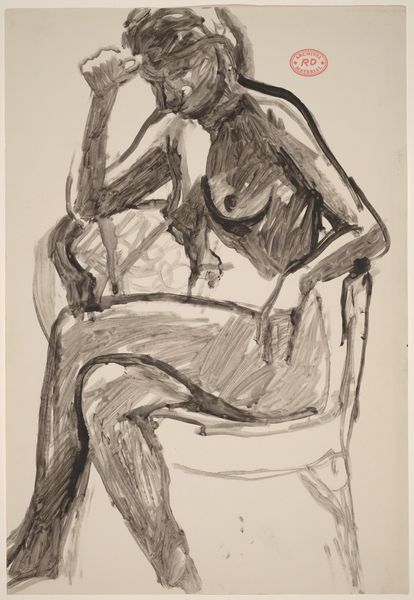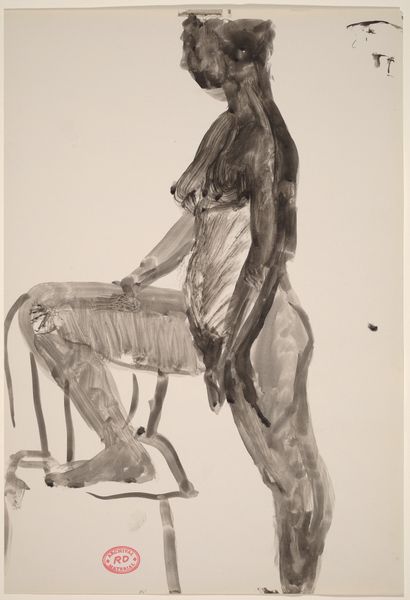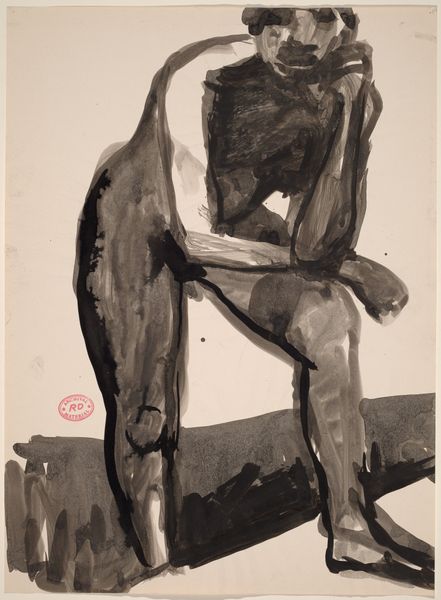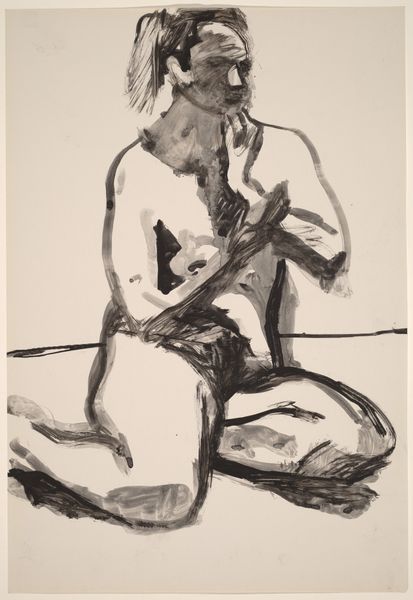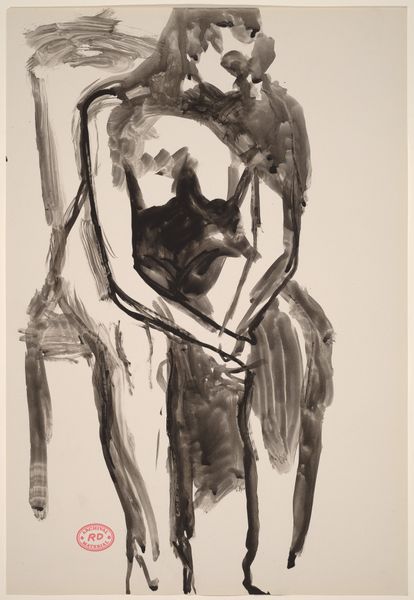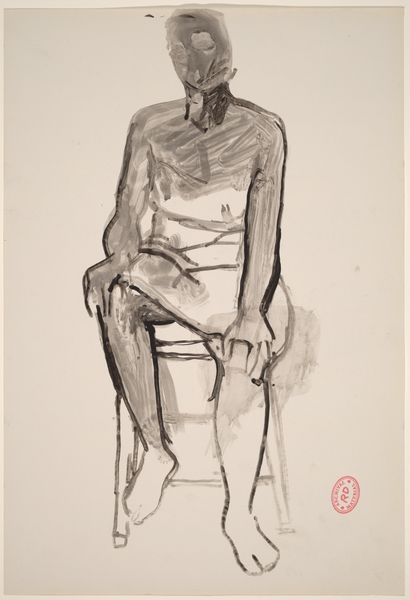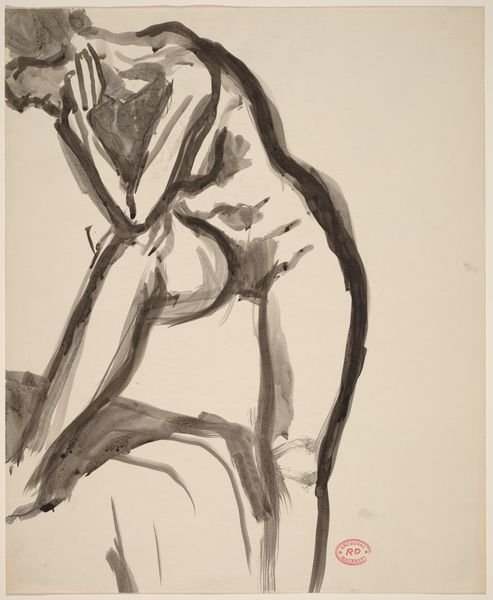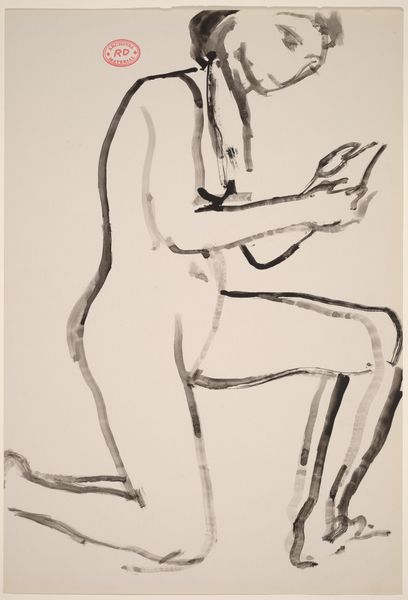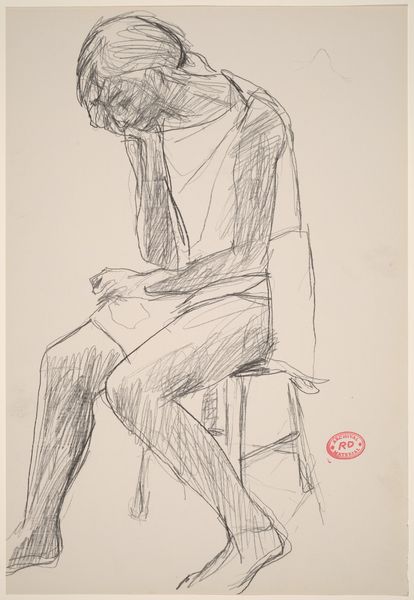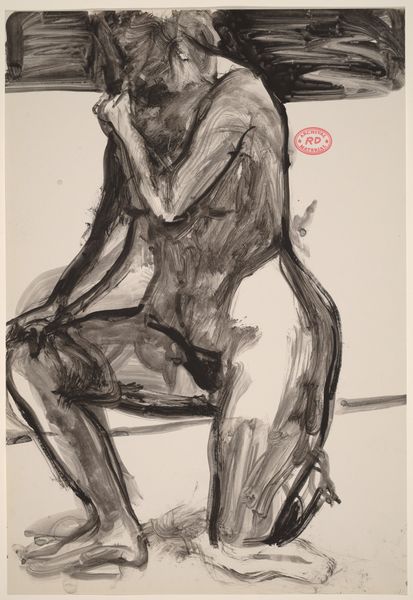![Untitled [female nude kneeling on one knee] by Richard Diebenkorn](/_next/image?url=https%3A%2F%2Fd2w8kbdekdi1gv.cloudfront.net%2FeyJidWNrZXQiOiAiYXJ0ZXJhLWltYWdlcy1idWNrZXQiLCAia2V5IjogImFydHdvcmtzL2ExNDYyZjNmLWM4MDAtNDQyYi1hMDY3LTNkYmZmYTVjN2MyZS9hMTQ2MmYzZi1jODAwLTQ0MmItYTA2Ny0zZGJmZmE1YzdjMmVfZnVsbC5qcGciLCAiZWRpdHMiOiB7InJlc2l6ZSI6IHsid2lkdGgiOiAxOTIwLCAiaGVpZ2h0IjogMTkyMCwgImZpdCI6ICJpbnNpZGUifX19&w=3840&q=75)
drawing, ink
#
drawing
#
ink drawing
#
figuration
#
bay-area-figurative-movement
#
ink
#
portrait drawing
#
nude
Dimensions: overall: 40.6 x 27.9 cm (16 x 11 in.)
Copyright: National Gallery of Art: CC0 1.0
Curator: Richard Diebenkorn's ink drawing, aptly titled "Untitled [female nude kneeling on one knee]," dates from between 1955 and 1967. What strikes you most when you see it? Editor: Its immediacy. The stark black ink against the white ground; the raw, gestural quality of the line. It feels like a fleeting impression captured on paper, imbued with a restless energy. Curator: I think that energy is crucial. Remember that this piece comes out of a very specific period when the representation of the female form was being challenged and reconsidered across artistic and activist movements. The woman is rendered with an intense combination of vulnerability and self-possession. Her gaze is hidden; it demands we reconsider our own expectations of objectification. Editor: But aren’t you imposing too much on the drawing? For me, it’s less about her gaze and more about the overall composition, a dynamic interplay of light and shadow created with economical brushstrokes. The negative space becomes just as significant as the inked areas, forming a powerful contrast that emphasizes the subject’s volume. I am curious about the brushwork specifically and the artist's control of tonal value in monochrome. Curator: But that contrast exists within a dialogue of visibility, gender, and power. What is made visible, what is left in shadow—these choices engage historical narratives where women have historically been represented, framed, and often silenced within social constructs. The gestural marks represent something urgent beyond just the representation of light and shadow; there's an agency being communicated. Editor: Perhaps, but regardless of its socio-political underpinnings, the way Diebenkorn employs ink is masterful. Look at the way he models the figure—the varying thickness of the lines suggests depth and texture without resorting to overly detailed rendering. It has a sense of completeness, even though the face is almost obliterated and only single, powerful brushstrokes hint at any features at all. Curator: That very lack of detail opens space for interpretation, for projecting our own understandings of femininity and form onto the image. Editor: True, but ultimately, the drawing functions because of its structural and visual harmonies—its abstract qualities, in a sense, liberate it from any one specific interpretation. Curator: Still, acknowledging that any single viewing is partial or limited is vital. It forces us to see art as entangled within complex political landscapes. Editor: And, equally important, the inherent aesthetics enable the social or historical conversation in the first place.
Comments
No comments
Be the first to comment and join the conversation on the ultimate creative platform.
